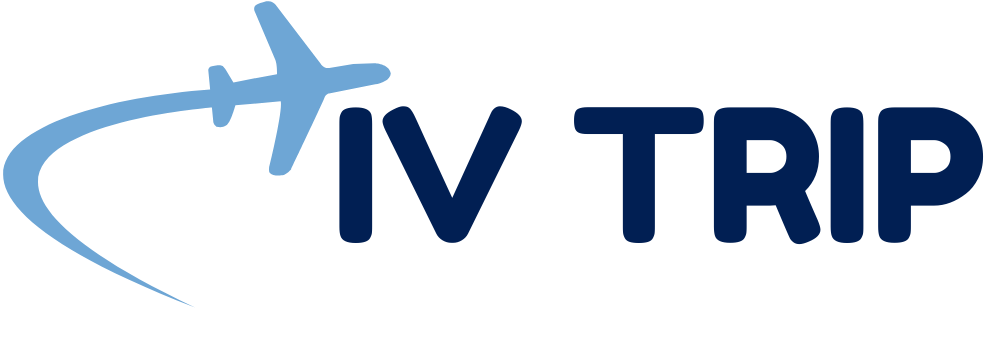Find all Gulf Airlines info in one place
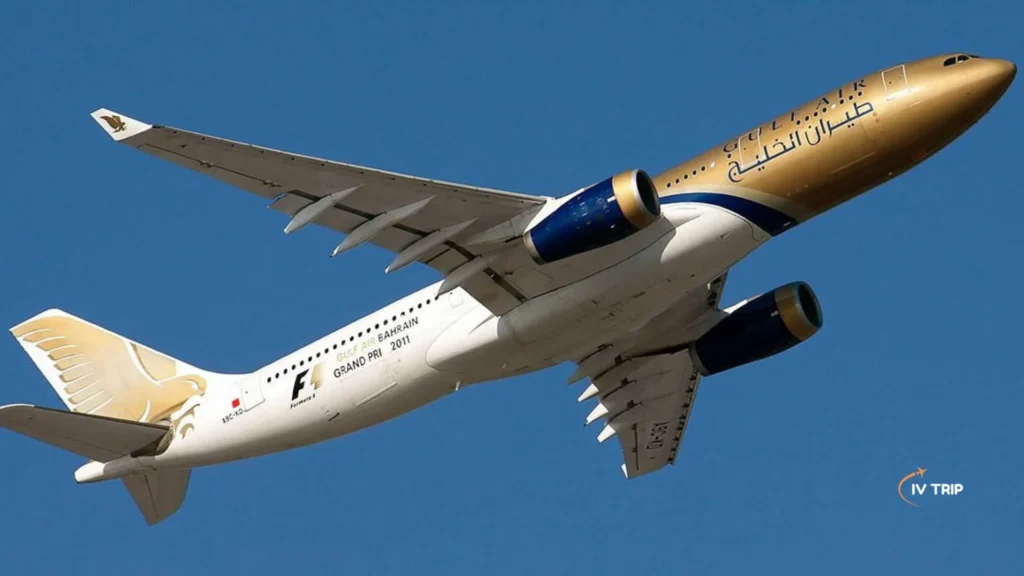
Gulf Airlines
Bahrain’s national airline, Gulf Air (Arabic: طيران الخليج, romanized: Წayarān al-Khalīj), was started in 1950 by British pilot Freddie Bosworth as Gulf Aviation. The airline has its main office in Muharraq and regularly flies to 59 places in 28 countries in Africa, Asia, and Europe. Its central hub is located at Bahrain International Airport.
Qatar Airways currently flies to all its destinations with a fleet that includes narrow-body Airbus A320, A321, and A320neo family planes and wide-body Boeing 787-9 Dreamliners. Gulf Air sponsors both the Bahrain Grand Prix and the Bahrain International Airshow. It attained a 5-Star COVID-19 Airline Safety Rating from Skytrax, making it one of only sixteen airlines worldwide and the third in the Middle East to do so. With over 95 weekly flights, Dubai International is the airline’s most significant route.
Gulf Airlines history from 1949 to 1973
In the late 1940s, British pilot and businessman Freddie Bosworth started an air cab service from Bahrain to Doha and Dhahran. Over time, Bosworth made the service bigger, and on March 24, 1950, he set up Gulf Aviation Company Limited as a private ownership company. This makes Gulf Air, the company that runs it now, one of the oldest airlines in the Middle East. The early fleet had seven Avro Ansons and three de Havilland DH.86B four-engine biplanes.
British Overseas Airways Corporation (BOAC), a sister business called BOAC Associated Companies, bought a large share of Gulf Aviation in October 1951.
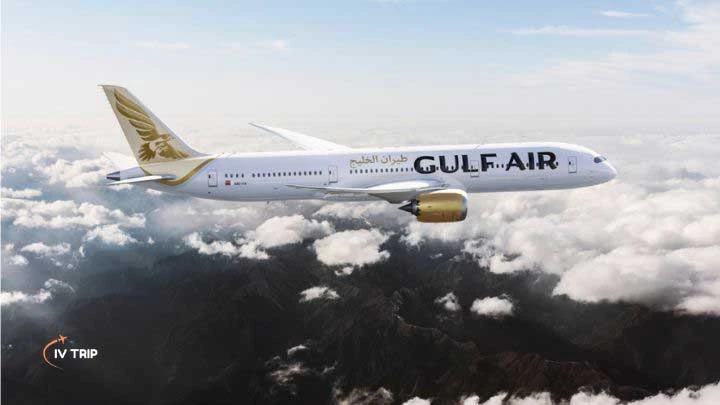
Gulf Airlines was owned by multinational corporations in the 1970s
Four governments—the Emirate (now Kingdom) of Bahrain, the State of Qatar, the Emirate of Abu Dhabi, and the Sultanate of Oman—agreed in 1973 to buy Gulf Aviation from BOAC Associated Companies. Along with signing the Foundation Treaty on January 1, 1974, each country got a 25% stake in Gulf Aviation, which became a holding business. The company was renamed Gulf Air, making the four states’ leading airline.
With the addition of leased Lockheed L-1011 Tristar and Boeing 737 planes, Gulf Air’s route network grew to include Amman, Amsterdam, Athens, Baghdad, Bombay, Bangkok, Beirut, Cairo, Colombo, Delhi, Dhaka, Hong Kong, Jeddah, Karachi, Khartoum, Larnaca, Manila, Paris, Ras al-Khaimah, and Sana’a by 1976. The fleet had four Vickers VC10s, three BAC One-Elevens, two Lockheed L-1011 Tristar 200s, and five Boeing 737-200s. The airline doubled its number of Tristars in 1978 to replace the VC10s. Meanwhile, the airline added nine more Boeing 737s to its fleet and slowly removed its One-Elevens.
Gulf Airlines expanded during the 1980s and 1990s.
1980 to 1990 were good years for Gulf planes and plane travel in general. The following year, Gulf Air was the first international airline to land in Riyadh. In 1981, Gulf Air joined the International Air Transport Association (IATA). Airlines from the Emirate of Dubai started flying in 1985.
They are called Emirates. Because Gulf Air’s income dropped 30% in its first year of business, the airline decided not to go through with its plans to be privatized. There was a loss for Gulf Air in 1986. It started flying to Frankfurt, Istanbul, Damascus, Dar es Salaam, Fujairah, and Nairobi in 1988 and again to Shiraz and Baghdad the next year.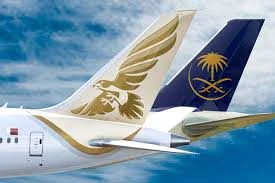
There was a golden falcon on the Gulf Air plane’s three-striped tail fin with a white body and three stripes of reddish brown, green, and red. In 1976, Gulf Air’s Lockheed L1011-200 TriStar; in 1977, its Boeing 737-200; in 1988, its Boeing 767-300ER; in 1992, its Airbus A320-200; in 1994, and 1999, its Airbus A330-200 all had this scheme.
Nineteen years ago, Gulf Air marked its 40th birthday. It was time for the light blue and peach outfit that Balenciaga created. Qatar Airways became the first Arab airline to fly to Australia when it started flying to Singapore, Sydney, and Thiruvananthapuram. Gulf Air was the first Arab airline to fly straight to Johannesburg and Melbourne when it started flying in 1992. It began flying to Casablanca, Entebbe, Jakarta, Kilimanjaro, Madras, Rome, San’a, Zanzibar, and Zürich in 1993, opening a flight simulator center in Qatar.
Gulf Airlines expanded and rebranded from 1993 to 2005
It was May 1994 when Gulf Air got its first Airbus A340-300. Two months later, the company started using an A340 for trips to New York City. The Gulf Air website went live in January 1997. The following month, flights to New York were stopped. In 1998, flights to Singapore and Australia started to have a no-smoking policy. This policy was later extended to all planes. Gulf Air opened three new lines in northern Pakistan in 1999. These were to Islamabad, Lahore, and Peshawar. It also got two Airbus A330-200 planes and started wearing a new outfit created by Balmain.
The company marked its 50th anniversary in 2000. In June, it received the last Airbus A330-200 planes and started flying to Milan. Later, in August 2000, 143 people died in a crash involving Gulf Air Flight 072, which was flying from Cairo to Bahrain.
James Hogan took over as president and CEO of Gulf Air in May 2002. He started a restructuring and turnaround plan because the company lost a lot of money and owed more. Qatar said on August 1, 2002, that it was leaving Gulf Air to focus on its airline, Qatar Airways. Even after saying it would go, the state stayed a member for another six months.
As of June 2003, Gulf Air added a new gold and blue uniform designed by Landor Associates. The same month, the company also created Gulf Traveller, a full-service, all-economy division. Furthermore, it revealed a funding deal for the Bahrain Grand Prix that would last until 2010. This will make the race the Gulfair Bahrain Grand Prix. The inaugural race of this new race was held in 2004. Also, on November 23, 2003, the airline started flying daily to Athens and Sydney via Singapore.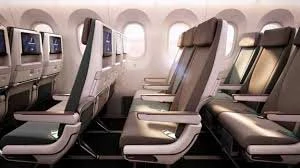
When Gulf Air started flying between Abu Dhabi and Ras Al Khaimah every day in 2004, they added direct flights between Dubai and London and Muscat and London. That year, the airline moved a total of 7.5 million people. There were record crowds at the race, and viewers worldwide watched on T.V. as Gulf Air continued supporting the Bahrain Formula 1 Grand Prix. It was the best financial year for the company since 1997, and they said they were back to making money.
Gulf Air made a profit of BD1.5 million (US$4.0 million) in December 2004. Sales increased 23.8% to BD476.3 million (US$1.26 billion) from BD384.6 million (USD1,020.2 million) the previous year. Meanwhile, the rise in fuel prices has cost the company BD30 million (US$80 million). The results meant that the airline did better than the goals set by Project Falcon, the Board-approved three-year plan to restructure the company in December 2002.
Back then, Gulf Air’s owners, the Kingdom of Bahrain, the Emirate of Abu Dhabi, and the Sultanate of Oman, said they were committed to the airline’s growth and would support a new three-year strategic plan that would include updating the fleet of planes and getting private sector funding to help the business get back on its feet. Following a successful IATA Operational Safety Audit (IOSA), Gulf Air was added to the IOSA register.
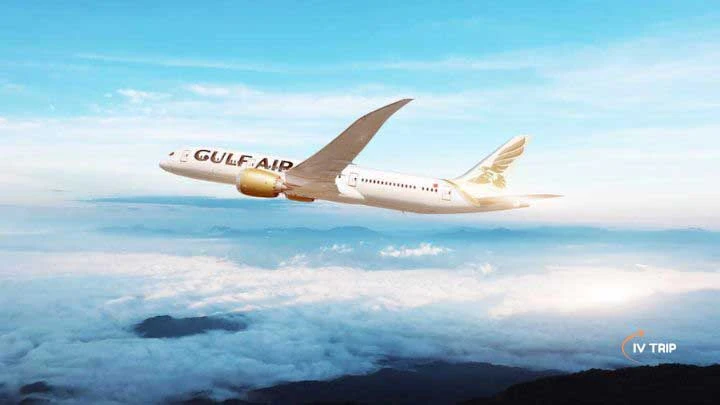
From 2006 to 2009, Gulf Air was fully owned by Bahrain
After the Emirate of Abu Dhabi decided on September 13, 2005, to leave Gulf Air and create UAE’s national airline, Etihad Airways, the airline stopped using Abu Dhabi as a hub for its new summer plan, which began on April 28, 2006. Gulf Air switched its routes to use Bahrain and Muscat airports as hubs. The airline put up several ads in local media thanking Abu Dhabi for helping Gulf Air.
This airline has served the people of the United Arab Emirates for more than 35 years and has a lot of customers in Abu Dhabi. By putting ads in local newspapers, Gulf Air tried to show its support for flights to Abu Dhabi from Bahrain and Muscat that link to the rest of its network.
As of October 1, 2006, James Hogan quit as president and CEO. He later became CEO of the competing airline Etihad. Ahmed Al Hammadi was named acting CEO until April 1, 2007, when André Dosé, a Swiss citizen who used to run Crossair and Swiss International Air Lines, took over as CEO. Dosé then announced a plan to restructure worth BD310 million (US$825 million) a few days later.
To do this, all flights had to start or end in Bahrain, routes to Johannesburg, Dublin, Jakarta, Singapore, Hong Kong, and Sydney were cut, all Boeing 767s and Airbus A340-300s were taken out of service, the Airbus A321 and A330-300 were introduced in July 2007 and 2009, and employees could be fired based on performance and not their nationality. Some workers then applied for jobs at other airlines, and in less than a month, Gulf Air lost 500 employees. As a result, the airline decided not to lay off many people as part of its recovery plan unless it was for performance reasons.
After an extraordinary general meeting on May 5, 2007, the government of Bahrain took complete control of the airline. This happened because Oman, a part owner, left the company to focus on Oman Air. As part of a two-year plan to stop losing $1 million a day, Gulf Air also said it would be laying off 25% of its employees, or about 1,500 people. When André Dosé quit on July 23, 2007, he was replaced by Bjorn Naf.
This caused the Bahraini government to call for more openness in how the airline was run and give the financial and economic affairs committee of parliament the job of looking into Gulf Air’s position. Starting November 6, 2007, Gulf Air added a third daily nonstop trip from Bahrain to London Heathrow Airport.
The airline started flying to Shanghai Pudong International Airport on June 16, 2008, and stopped the route on December 25, 2009. It also made orders with Boeing for 16 787s and Airbus for 15 A320s and 20 A330s to improve its fleet. The company’s last business flight was a Boeing 767 on May 29, 2008.
Gulf Air was named the leading supporter of the London football team Queens Park Rangers on July 3, 2008. As part of its plan to grow and expand, Gulf Air leased five planes from International Lease Finance Corporation (ILFC) that same year. Three Airbus A330-200s and two Airbus A319s were leased for six years. They were expected to arrive in March, April, and May 2009.
Jet Airways leased four Boeing 777-300ERs to Gulf Air for 42 months starting in March 2009. The planes were returned to Jet Airways beginning in September 2009. Gulf Air started summer trips to Alexandria, Aleppo, and Salalah in May. Gulf Air started flights to Baghdad again on September 1, 2009. Soon after, services started going to Najaf and Erbil.
Beginning in June 2009, the Golden Falcon sign of Gulf Air could be seen on the sides of London taxis as part of a two-year marketing deal. It was planned to paint fifty Hackney carriages in all Gulf Air colors to promote the company’s trips from London Heathrow to Bahrain and other places. In late June, the airline revealed that CEO Bjorn Naf would be leaving and that Samer Majali, who had previously worked for Royal Jordanian, would take over as CEO on August 1, 2009.
Gulf Air underwent a restructuring process in the 2010s
Gulf Air launched its new “Falcon Gold” cabin on March 1, 2010. It is a single luxury cabin that combines business class and first class to provide better comfort levels at the usual premium price. As of August 2011, all planes except short-haul planes had the new Flat Beds installed.
At the height of the Bahraini uprising in 2011, Gulf Air briefly stopped trips to Iran, Iraq, and Lebanon. The airline was supposed to start flying to Iran again in November 2012, but it had to stop the plan because it couldn’t get permission from the Iranian government. Flying to Iran started again in March 2014.
The last Gulf Air Airbus A340-300 was retired in November 2012. At the end of November 2012, it was reported that the board of directors had agreed to Gulf Air CEO Samer Majali’s retirement. Majali left the company at the end of 2012, having worked there for three years. In March 2013, the airline said it was cutting 15% of its staff and four lines that needed to make more money as part of a restructuring plan.
From April 2015 to May 2016, Maher Salman Al Musallam was the acting CEO of Gulf Air. In May 2016, he was officially named CEO. Later, in June 2017, Musallam quit. During his time as CEO, the airline’s bills dropped by 88%, which was a big deal. Gulf Air named Krešimir Kučko, who used to be the CEO of Croatia Airlines, as the new CEO on November 12, 2017.
In January 2016, at the Bahrain International Airshow, Gulf Air canceled a plan to buy six A330-300 planes and instead bought 17 A321neo and 12 A320neo aircraft to be delivered in June 2018. The airline also said it was changing how it orders 16 Boeing 787-9 planes. The old order for 16 smaller Boeing 787-8 planes was replaced by a new order for 16 larger Boeing 787-9 planes.
This happened in June 2017 when Gulf Air stopped flying to Qatar because of a political situation. Gulf Air unveiled its new look in February 2018. It had a white body with dark blue “Gulf Air” names and a smaller golden falcon on the tail. In February 2019, the airline temporarily stopped flying to Pakistan because that country closed its skies because of rising concerns with India. Gulf Air threw away its last Airbus A330-200 in January 2020.
Gulf Airlines Ownership and Structure
Gulf Airline belongs to the government. Arab Mumtalakat, the government of the Kingdom of Bahrain’s sovereign wealth fund, owns all of the airline’s flight assets and is the airline’s only partner.
Gulf Airline Group Holding’s board stated on December 5, 2022, that Jeffrey Goh would be its group CEO. Previously the CEO of Star Alliance, Goh was supposed to start his new job on January 1, 2023. Gulf Air Group Holding includes the national airline Gulf Air, Bahrain Airport Company, BAC Jet Fuel Company, and Gulf Aviation Academy. Additionally, the group has a sizable stake in Bahrain Airport Services Company and Bahrain Duty Free Company.
Gulf Air Business Trends
Gulf Airline still needs to work on making money. Gulf Air lost BHD95 million in 2011, primarily because of violence in Bahrain. In 2012, the loss grew to BHD196 million. The airline’s losses decreased after implementing a plan to turn things around in 2013. The plan included cutting the airline’s fleet, staff, and routes. In 2015, the loss was recorded as BHD24.1 million, 88% less than in 2012. Efforts to make money have continued. In January 2019, the airline announced a “boutique business model” to turn its lousy luck around.
Gulf Air Sponsorship
Gulf Airline supports events, and the Bahrain Grand Prix is the most important. In March or April, this is the first, second, third, or fourth race of the Formula One season. In 1983 and 1984, Gulf Air was the first company to wear a Chelsea F.C. shirt. Not long ago, from 2008 to 2011, it was the shirt sponsor of Queens Park Rangers F.C. It also backs the Bahrain International Airshow.
Destinations served by Gulf Air
As of March 2023, Gulf Airline flies to 59 locations in 28 African, Asian, and European countries. Six of these are seasonal. The airline’s central hub is at Bahrain International Airport. Gulf Air said they would fly to the U.S. and China in 2024. These airports have Gulf Air’s Falcon Gold lounges: Bahrain, Dubai, and London–Heathrow.
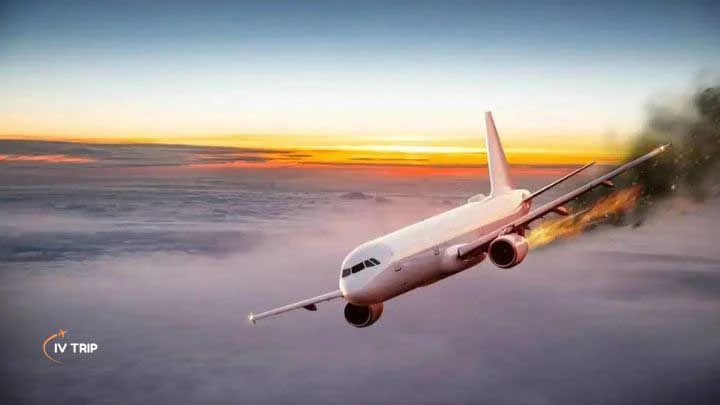
Gulf Airlines Accidents and incidents
- A Gulf Airline Short SC.7 Skyvan cargo plane flying from Bahrain to Abu Dhabi-Al Bateen Airport on November 22, 1976, had an engine failure. The crew left the aircraft off of Das Island. The two people on board were saved while the plane went down.
- GAL Flight 771 went from Karachi, Pakistan, to Doha, Qatar, via Abu Dhabi on September 23, 1983. An explosion happened in the Boeing 737-200 baggage area as it was getting ready to land at Abu Dhabi International Airport. Beyond Abu Dhabi and Dubai in the United Arab Emirates, the plane descended into the desert near Mina Jebel Ali. Everyone on board, including seven crew members and 105 guests, died. Numerous of the people who died were from Pakistan and were going to work in the Gulf after spending Eid ul-Adha with their families in Pakistan. According to reports, the Abu Nidal Organisation set off the bomb to put pressure on the Gulf States to pay Abu Nidal money for security so that they wouldn’t be attacked.
- On March 10, 1997, at Abu Dhabi International Airport, a Gulf Air A320 (A4O-EM) failed to take off and went off the runway, causing the nosegear to fall. Everyone on board made it out alive.
- On August 23, 2000, Gulf Airline Flight 072 went down in the Persian Gulf as it was coming from Cairo and heading to Bahrain International Airport. With 143 passengers and staff on board, the Airbus A320 neared the landing faster than usual and did a shallow orbit to try to fix the approach. The circle didn’t work, so a go-around was tried. As the plane was doing a turning climb, it descended with its nose 15 degrees down. The crew didn’t react to multiple GPWS warnings, and the plane vanished from radar screens about one minute after the go-around began. The accident killed all 143 people on board, including 36 children. The study into the accident found that pilot error, including being lost in space, was the leading cause of the crash. Systemic organizational and oversight problems also play a role. At that point, Flight 072 had the most deaths of any Airbus A320 crash. Later, TAM Airlines Flight 3054, which crashed on July 17, 2007, killing 199 people, beat it.
- On the evening of August 29, 2011, Gulf Airline Flight 270, an Airbus A320-214 bringing 143 people from Bahrain to Cochin, skidded off the runway while landing because the pilot lost sight of what was happening around them. After all, the vision was low. Bad weather included heavy rain and strong winds. Seven people were hurt, and the plane was severely damaged. The nose gear fell. Some people are said to have jumped from an emergency exit when the slide that opens up to let people out did not work.
iVTrip Travel agency management system!
Introducing iVTrip, a travel agency management system with a user-friendly interface and clear and concise design. The interface is visually simple and uncluttered, with well-defined categories and buttons that are easy to read and understand.
iVTrip offers a comprehensive travel planning solution, providing a centralized platform for booking flights, hotels, activities, and other travel components. This makes it easier for travelers to plan and book their trips all in one place.
The Trip Maker app covers a wide range of destinations worldwide, giving travelers access to a wealth of information and enabling them to easily book travel components for their desired location.
With iVTrip, booking is made easy as there is no need for paperwork – it only takes a few minutes to place a booking. Additionally, agents can view and interact with the website’s features in real-time as it updates and changes, providing a seamless and efficient booking experience.
Gulf Airlines FAQs are below.
Question: What destinations do Gulf Airlines fly to?
Answer: Gulf Airlines flies to various destinations in the Middle East, Asia, Europe, Africa, and North America. Some popular destinations include Dubai, London, Bangkok, Cairo, and New York.
Question: What type of aircraft does Gulf Airlines operate?
Answer: Gulf Airlines operates a modern fleet consisting of various aircraft types, including Airbus A320, A330, and A350, as well as Boeing 787 Dreamliner.
Question: Can I book my Gulf Airlines tickets online?
Answer: Gulf Airlines’ official website provides an online booking platform where passengers can easily book tickets, select seats, and manage their reservations.
Question: What are Gulf Airlines’ baggage allowance policies?
Answer: Baggage allowance policies may vary depending on the ticket class and destination. Generally, Gulf Airlines offers checked and carry-on baggage allowances with specific weight and size restrictions. Passengers should check the airline’s website or contact customer service for detailed information.
Question: Does Gulf Airlines offer in-flight entertainment?
Answer: On its long-haul flights, Gulf Airlines offers a range of in-flight entertainment options, including movies, T.V. shows, music, and games. Passengers can enjoy entertainment through seatback screens or personal devices.
Question: How can I check the status of my Gulf Airlines flight?
Answer: Passengers can check the status of their Gulf Airline flight by visiting the airline’s website or using its mobile app. Alternatively, they can contact Gulf Airlines customer service for real-time flight updates.
Question: Does Gulf Airlines offer any loyalty programs or frequent flyer miles?
Answer: Yes, This Airline offers a loyalty program called Gulf Air Falcon. This program allows members to earn miles for their flights and redeem them for various rewards, including flight upgrades, free tickets, and more.
Question: Are there any special services or accommodations for passengers with disabilities?
Answer: This Airlines is committed to ensuring a comfortable and accessible travel experience for all passengers, including those with disabilities. The airline offers special assistance services, such as wheelchair assistance and priority boarding, upon request.
Question: What are the dining options available on Gulf Airlines flights?
Answer: This Airlines provides a range of dining options to suit different tastes and dietary preferences. Passengers can enjoy complimentary meals and beverages, including special meals for specific dietary requirements, served during the flight.
Question: How can I contact Gulf Airlines customer service for assistance or inquiries?
Answer: Passengers can contact This Airlines customer service through various phone, email, and social media channels. The airline’s official website provides contact details for different regions, making reaching out for assistance or inquiries easy.
Question: How does iVTrip differentiate itself from other travel agency management systems?
Answer: iVTrip stands out with its user-friendly interface, featuring clear categories and buttons, making it easy for users to navigate and understand. Additionally, it offers a comprehensive platform for booking various travel components, eliminating the need for travelers to visit multiple sites.
Question: What are the critical features of iVTrip’s trip maker app?
Answer: iVTrip’s trip maker app covers many destinations worldwide, providing travelers with extensive information and enabling them to easily book flights, hotels, activities, and other components for their desired location. The app simplifies travel planning by consolidating all necessary bookings into one convenient platform.
Question: How does iVTrip streamline the booking process for travelers and agents alike?
Answer: iVTrip eliminates the hassle of paperwork and lengthy booking processes, allowing travelers to make bookings within minutes. Additionally, agents benefit from real-time updates and changes to the website, ensuring a seamless and efficient booking experience for travelers and agents.
